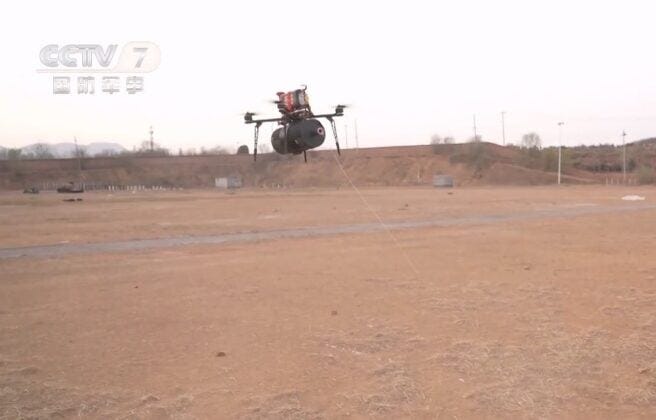This post is an extension of material that has appeared in another newsletter/section and other parts of my website more generally. While my newsletters/sections are primarily categorized by region—you can either subscribe to specific newsletters/sections or subscribe to the entire website/all of my writings—many posts can be readily placed in multiple newsletters/sections—but only appear in one newsletter/section given how the Substack platform is configured—and may be highly relevant to readers who are primarily interested in other parts of the world. I hope that my Extensions themed posts help rationalize my comparativist analytical approach, one that results in my website covering a very wide range of military-related topics and much of the world.
The use of armed “first-person video” (“FPV”) multirotor drones in the Russia-Ukraine War has received considerable attention worldwide and has led both China and Taiwan to develop and deploy armed “FPV” multirotor drones of their own. Whereas Russia and Ukraine are now each employing these inexpensive uncrewed aircraft-turned-munitions at an annualized rate of a million or more units per year, China encounters an obstacle in emulating how armed “FPV” multirotor drones are being used in the Russia-Ukraine: (single-use) multirotor drones lack the range required to cross the Taiwan Strait, which is some 130-180 kilometers wide at its narrowest points.


In a recent post, I discussed how both Russia and Ukraine are turning to fixed-wing “motherships” to launch, control, and extend the range of armed “FPV” multirotor drones.
While Russia and Ukraine are employing fixed-wing “motherships” to, in effect, launch armed “FPV” drones from locations very close to, if not well beyond, the constantly surveiled and, as such, incredibly dangerous frontlines, China can emulate this approach—among others—to allow the PLA to forward-launch armed “FPV” multirotor drones to attack targets on the island of Taiwan. China can, in fact, go much further than Russia and Ukraine have to date and likely ever will when it comes to the forward-launch of armed “FPV” multirotor drones and other, otherwise range-deficient munitions more generally.
For many years, detractors of the PLA’s amphibious capabilities often (justifiably) talked about a “million-man swim” across the Taiwan Strait. While China’s ongoing military modernization has fundamentally reshaped serious analysis of the country’s ability to undertake an amphibious invasion of Taiwan, various approaches to forward-launching inexpensive and plentiful armed “FPV” multirotor drones may lead to discussions of a “million-drone assault” in advance—and perhaps independent of—an amphibious landing attempt on the island of Taiwan. Going forward, the PLA Ground Force (PLAGF), not the PLA Rocket Force, the PLA Air Force, or the PLA Navy, may become the lead PLA service branch when it comes to attacking many thousands of discrete aimpoints across Taiwan. Armed “FPV” multirotor drones, including those that are carried and launched by fixed-wing “motherships,” are likely to be a key part of such a capability set.
Chinese military capabilities in general and Chinese military capabilities in the specific context of a Taiwan invasion scenario have been a core focus of mine for the better part of twenty years. I plan to more closely examine how a Chinese invasion attempt, including a non-conventional attempt that is not simply a quite orthodox large-scale amphibious assault that is preceded by air and missile strikes, may play out in future posts. This extensions-themed post highlights the benefits that result from the rather eclectic analytical approach that drives my interest in a wide range of military technologies and military dynamics across much of the world.
Some related recent posts:
Chinese Ground-Based Tube Artillery In An Amphibious Invasion Of Taiwan
While discussions of a People’s Liberation Army (PLA) amphibious invasion of the island of Taiwan tend to focus on the PLA’s amphibious assault capabilities and its ability to neutralize Taiwan’s air defences and coastal defences, China’s ability to provide PLA Ground Force (PLAGF) and other PLA ground combat personnel fire support will likely play a cr…




